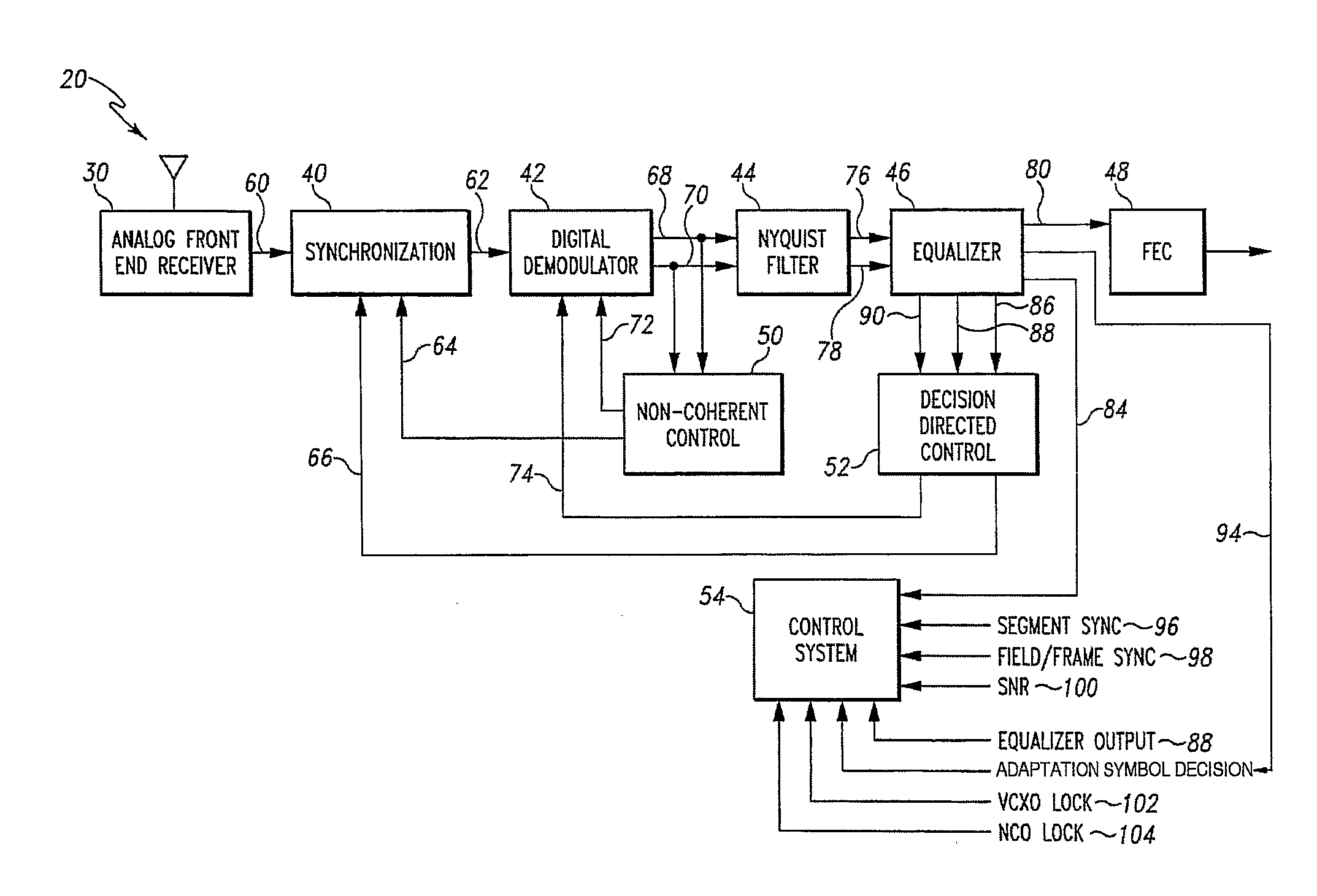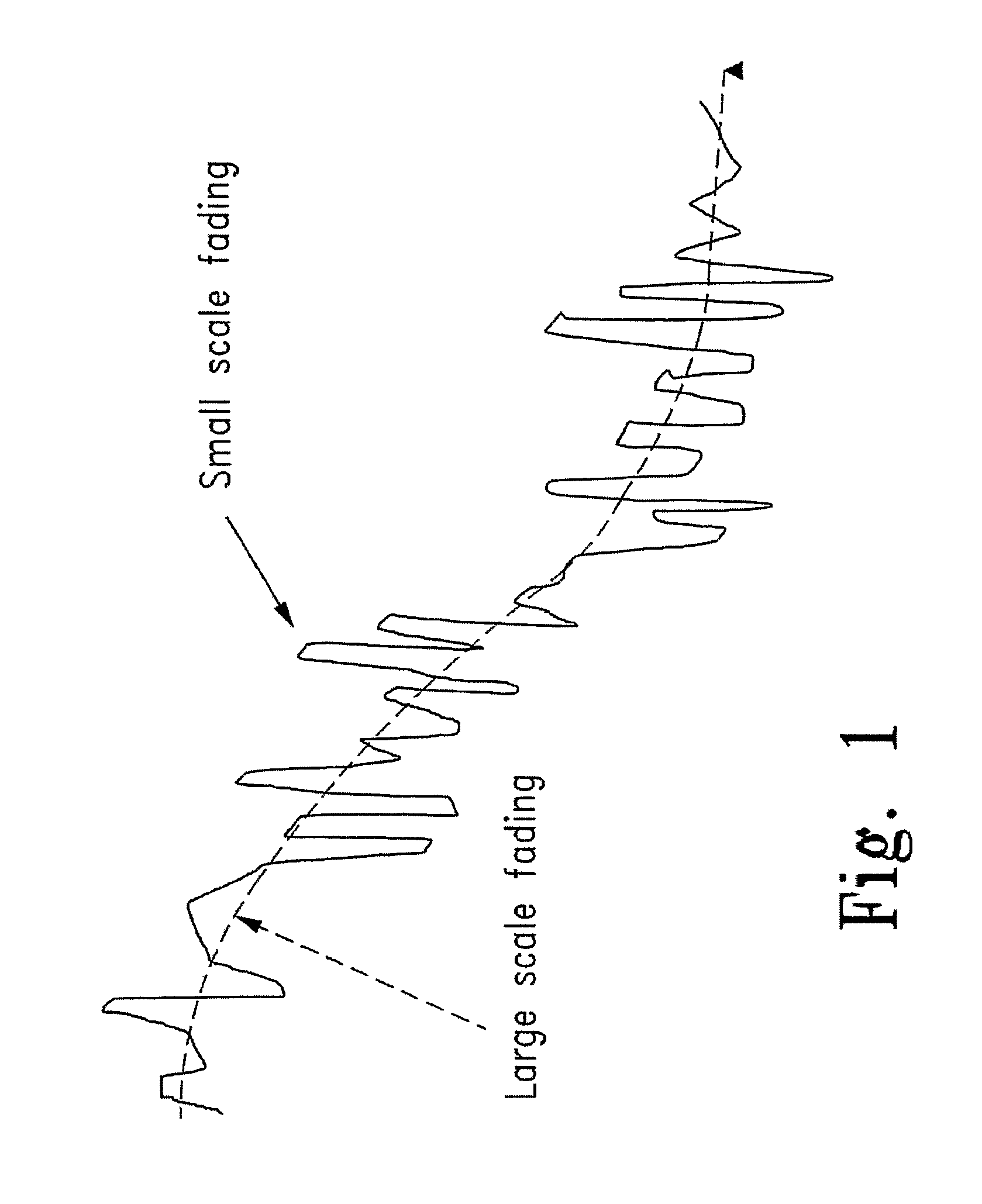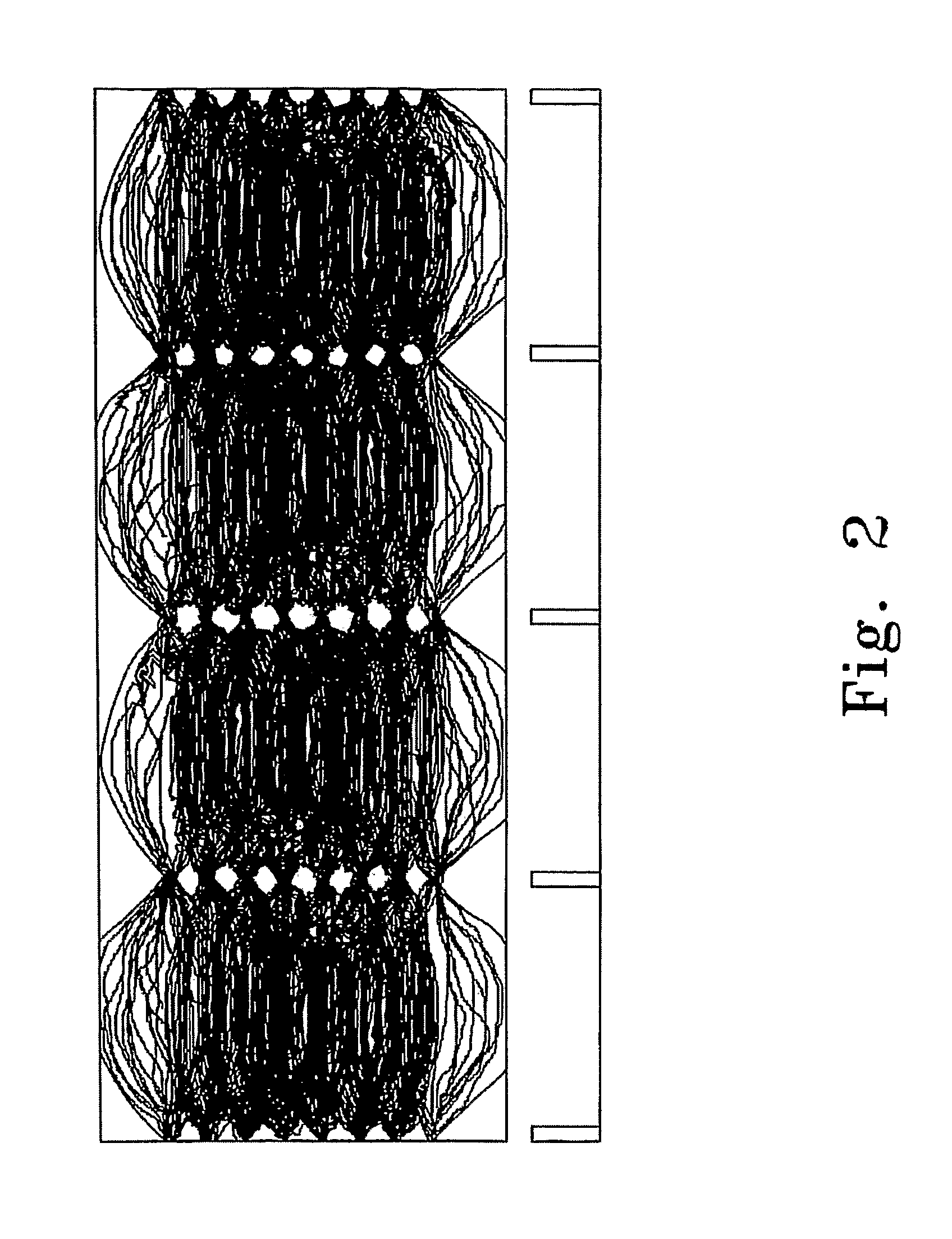Advanced Digital Receiver
a digital receiver and advanced technology, applied in the field of digital communication techniques, can solve problems such as improper reception, corrupted sent messages, and uncertainty as to the content of original messages
- Summary
- Abstract
- Description
- Claims
- Application Information
AI Technical Summary
Problems solved by technology
Method used
Image
Examples
Embodiment Construction
[0091]For the purposes of promoting an understanding of the principles of the invention, reference will now be made to the embodiments illustrated in the drawings and specific language will be used to describe the same. It will nevertheless be understood that no limitation of the scope of the invention is thereby intended. Any alterations to and further modification of the described embodiments, and any further applications of the principles of the invention as described herein are contemplated as would normally occur to one skilled in the art to which the invention relates.
[0092]One aspect of the present system illustrated in FIG. 3 is a digital receiver system with significantly improved stability and performance when receiving modulated signals in severe multipath environments. The techniques, devices, and systems embodied in this new digital receiver may be adapted to various modulation formats, including, but not limited to, QAM, offset-QAM and VSB. Illustratively, one non-limi...
PUM
 Login to View More
Login to View More Abstract
Description
Claims
Application Information
 Login to View More
Login to View More - R&D
- Intellectual Property
- Life Sciences
- Materials
- Tech Scout
- Unparalleled Data Quality
- Higher Quality Content
- 60% Fewer Hallucinations
Browse by: Latest US Patents, China's latest patents, Technical Efficacy Thesaurus, Application Domain, Technology Topic, Popular Technical Reports.
© 2025 PatSnap. All rights reserved.Legal|Privacy policy|Modern Slavery Act Transparency Statement|Sitemap|About US| Contact US: help@patsnap.com



